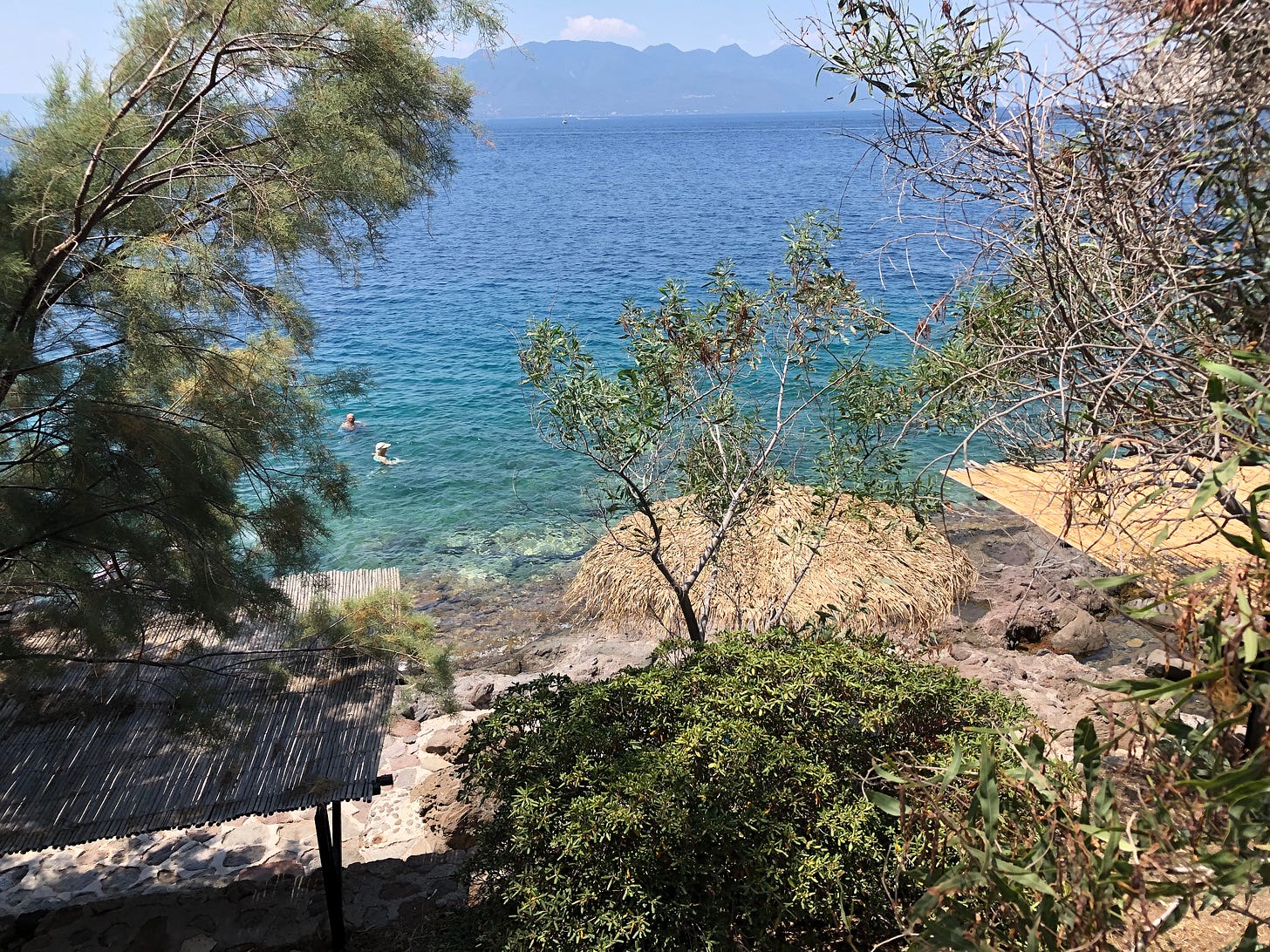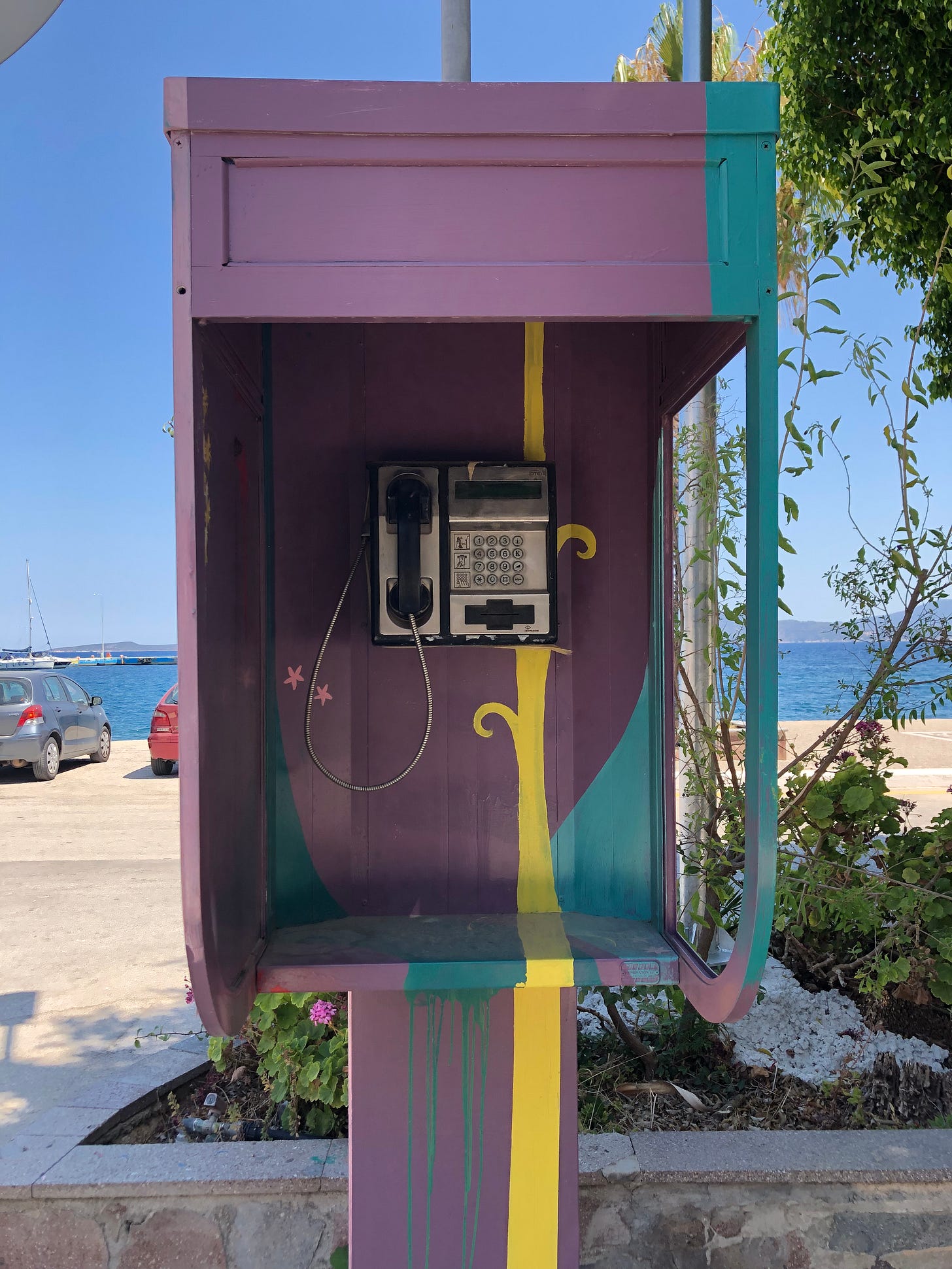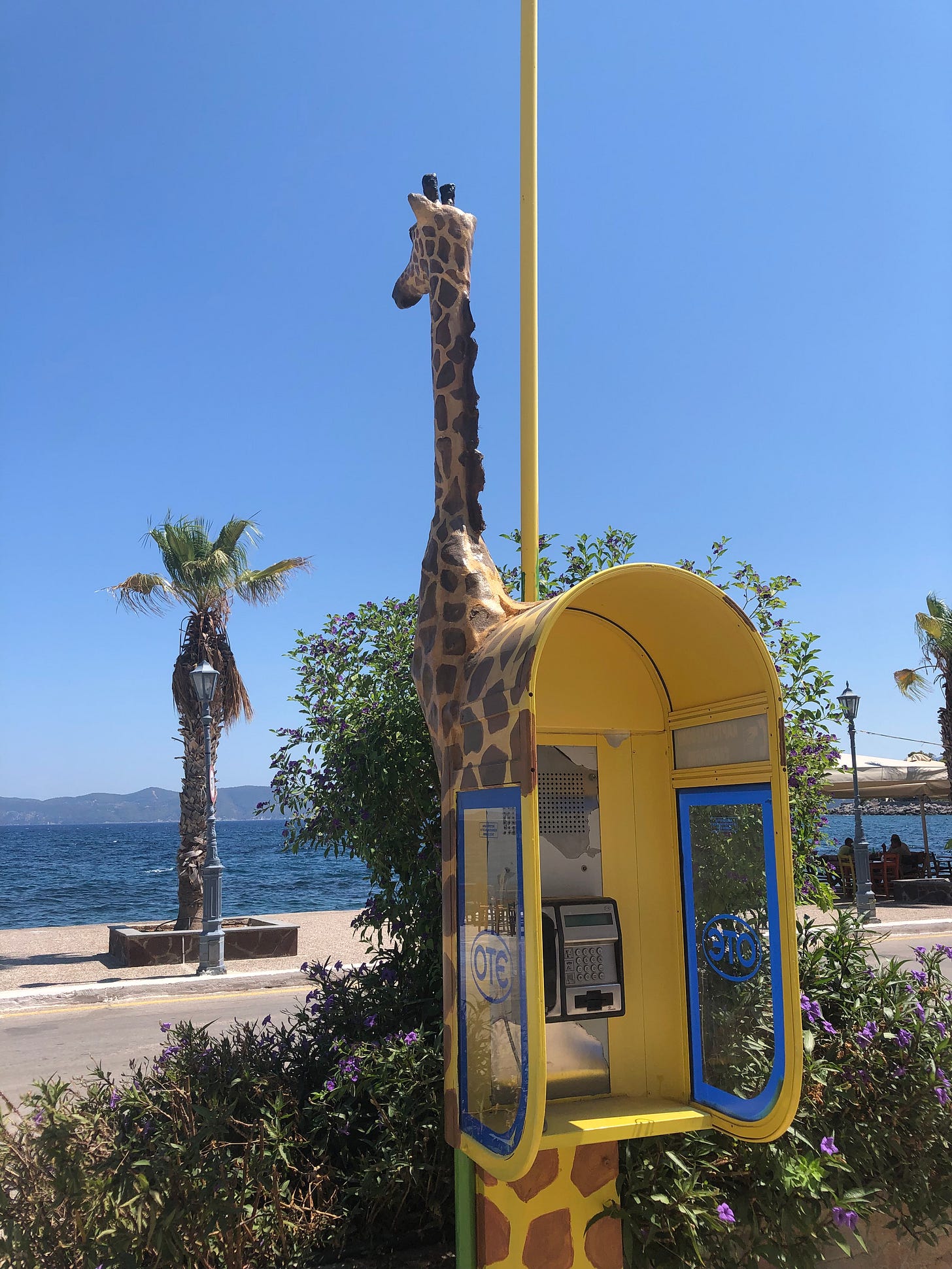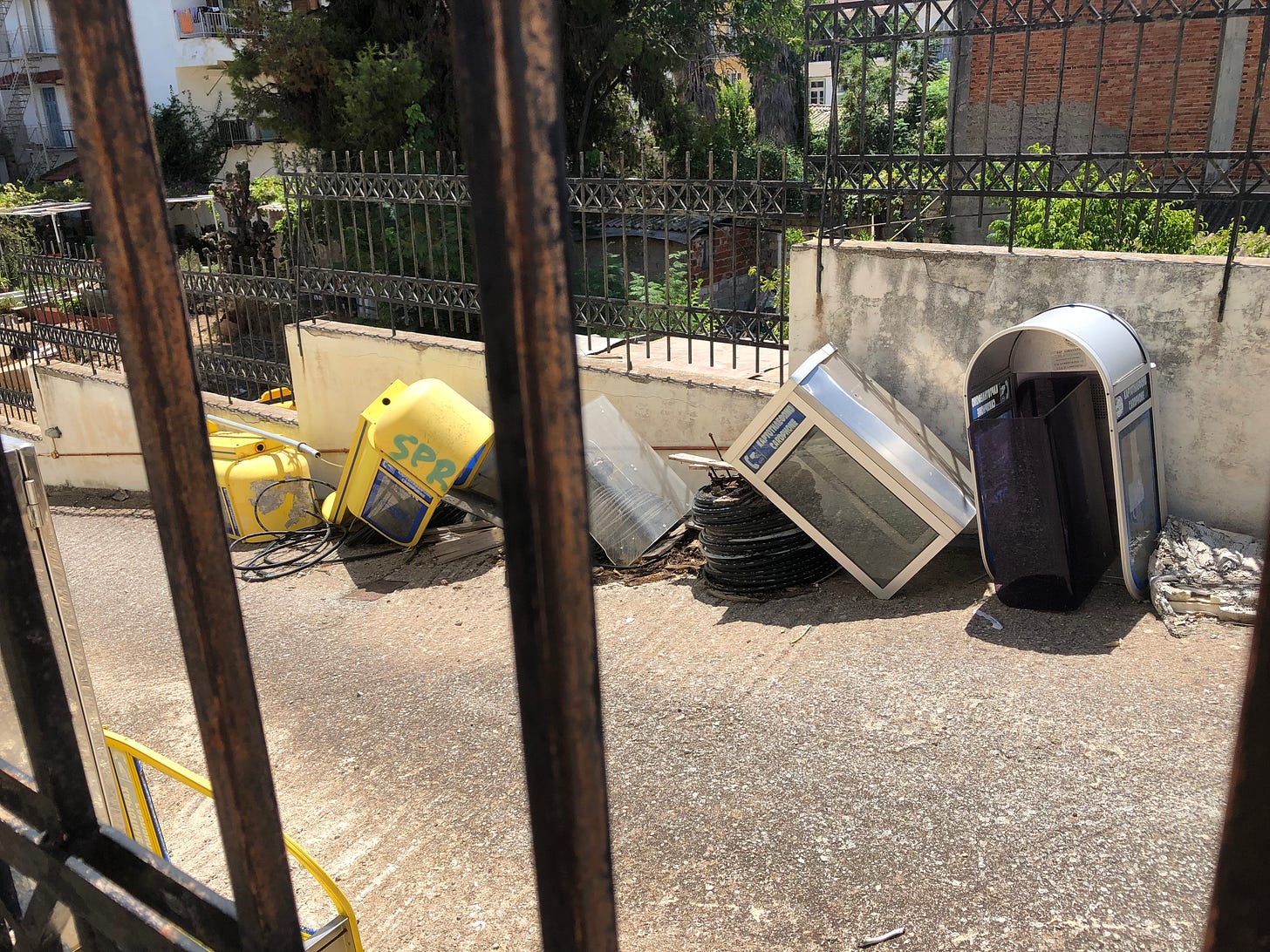Methana
Also known as the Land of Hephaestus after the Greek god of volcanos (among his many attributes)
What follows is my very personal view of Methana which I visited for the first time only last summer. I’ve done no more than scratch the surface of all there is to see and do. That said, Methana is very rural and for many there’s not actually that much to do or see. It’s true it remains a quiet, almost sleepy place but one that restores me every time I visit — which now I’m living only an easy drive is often.
At the time of my first visit I was living in Aegina and desperate to escape the hordes of tourists threatening to sink the island! I am exaggerating of course, but I found the crowded streets just too much.
I’d taken to driving every morning early to Perdika in the south of the island to swim off the rocks and spend the morning writing in a café away from the crowds in Aegina town. The café overlooking the harbour, and beyond to the Methana peninsula, became my summer refuge.
One morning I decided it was high time I explored beyond the confines of Aegina, lovely as it was and still is, and booked myself a long weekend on the peninsula. It’s only a short 40-minute ferry ride. In high summer there are several boats a day that stop briefly in Methana before proceeding to the island of Poros.
When I stepped off the boat onto the quayside the contrast with Aegina that I’d just left was overwhelming. Methana was peacefully, blissfully quiet.
A perfect antidote to jangled nerves and almost free of visitors, the town exuded what I could only call serenity. Exactly what I needed
After a few nights in a small hotel from which I could walk to swim every morning before breakfast (usually warm apple cake — mηλόπιτά —sublimely delicious!) in the harbourside café which served as my digital nomad’s office, I booked another two weeks in Villa Poppi and returned to Aegina to collect my car and a few more belongings.
Methana was once a thriving spa attracting people from all over Greece wanting to experience the healing waters. Unfortunately, its thermal baths closed decades ago due to bureaucratic and infrastructure issues, and the impressive building on your left as you drive into the village now stands abandoned.
Although the milky blue waters of the large pool fronting the building look inviting, closer inspection quickly dispels that impression. Wind-blown debris floating on the surface coupled with the strong smell of sulphur is off putting, although it’s something one quickly gets used to. I sincerely hope that it’ll one day find an investor with sufficient funds to breathe new life into the place. I’d be an early visitor although I imagine the cost might be prohibitive.
The peninsula is part of the active South Aegean volcanic arc that includes islands such as Nisyros, Thira (the official name of Santorini, and still referred to as such by Greek friends of mine), Milos and Aegina. It’s a volcanic complex that has been active for over a million years The most famous eruption of the Methana volcano was in 230 BCE which was reportedly described by the historian Pausanias as “a mountain rising from the sea”. I haven’t been able to verify the quotation but confirm the aptness of the description. The view from my balcony here in Epidavros looks directly towards the peninsula and outlines very clearly the volcano’s many craters.
Methana’s volcanic springs are famed for their therapeutic properties, in particular arthritis and respiratory issues. However, the cultural and historical significance of these waters runs deeper than that. The ancient Greeks believed the springs were the domain of Hephaestus, the god of fire and metallurgy, who was said to have lived beneath volcanoes. According to local folklore, the thermal waters of Methana were a gift from Hephaestus himself, meant to heal and rejuvenate. I for one am convinced of their powers because I always come out of the water feeling better after swimming here!
I’ve yet to seek out the lesser-known hot springs hidden in secluded coves or the heavily forested hills. Just as I haven’t yet bathed in the recently renovated Pausianas baths near the village of Agios Nikolaus in the north of the peninsula. But my soak in the small pool a short distance north from Methana town was positively delicious. However when I next went, it was dry and the time after that others had beaten me to it — it can’t comfortably hold more than three people — and anyway I would prefer to have it either to myself or to share with just one other person, preferably a close friend.
Last summer I attempted to visit the main volcanic crater at Kameni Chora. It wasn’t successful because I unfortunately stopped to refresh myself with a homemade lemonade—σπιτική λεμονάδα—in the small roadside café a short uphill walk before reaching it.
I say unfortunately because a wasp, no doubt attracted by my sweetened drink, suddenly stung me. Very, very painfully. My underarm skin reacted violently and I was forced to retreat to the pharmacist in Methana town to seek help in the form of strong antihistamine cream and tablets. The swelling took a week to subside. I’ll make another attempt to visit the crater soon.
I learned very recently via a YT channel (it’s worth checking out Stone Riddles if you’re interested in lesser known archaeological sites) that Methana boasts a small acropolis, once apparently a Mycenaean stronghold and dating back to the 6th century BCE.
I love exploring ancient sites and Methana being so close, I decided to investigate. Finding the site was easy—with sufficiently powerful binoculars I could almost have seen it from my balcony. I’d expected somewhere high up in a position dominating the surrounding land and seascape. But it’s actually remarkably low lying and only a few hundred meters from the coast road.
What wasn’t easy however, was finding a way to climb up to the ruins to explore. The place was deserted, there was no-one to ask and after trudging a while through the dry grass that surrounds the unfenced site, I gave up trying to find anything that resembled a path and anyway on my own I’d probably have had difficulty climbing so I took the path of least resistance and headed to the pretty port of Vathi for lunch.
I’ll return to explore the acropolis properly, that’s for certain, but next time I won’t go alone. I’ already have in mind two friends I might be able to co-opt into coming with me.
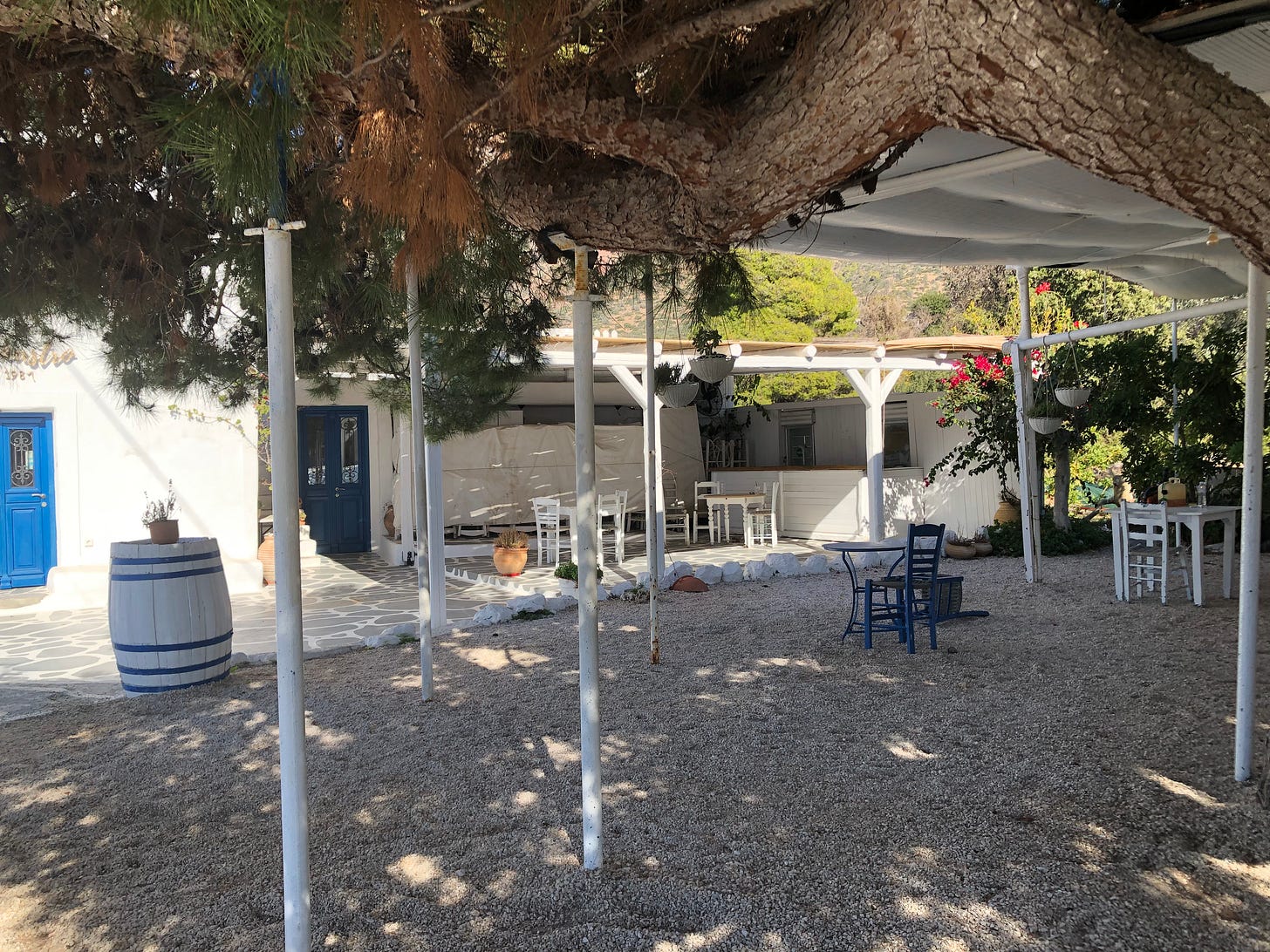
Off-season most of Vathi, which is popular with sailors in the summer months, is closed but two harbourside tavernas were serving and I opted for Soula’s because she has an enclosed space out of the chilly on-shore wind.
My simple meal of courgette croquettes and salad was more than adequate but Soula insisted I needed to round it off with a small bowl of yogurt and honey which she served with what for me was the star of the highlight — a thimbleful of a homemade liqueur. I rarely drink spirits of any kind and had no idea of what this was. So Soula showed me the large scented geranium on the terrace fronting the taverna whose pink flowers had formed the basis of her secret delight, the recipe for which, unsurprisingly, she wasn’t prepared to reveal!
To finish, a few fun photos of Methana phone boxes!
Not forgetting where Methana phone boxes go to die!
Methana goes beyond the typical tourist trail. If you’re willing to venture beyond the beaches and hot springs, Methana will reveal itself as a land of hidden depths and untold stories—a place where the past is not lost but is quietly waiting to be rediscovered.




